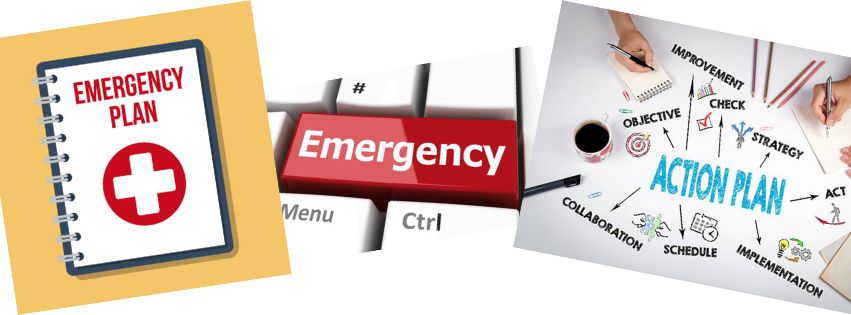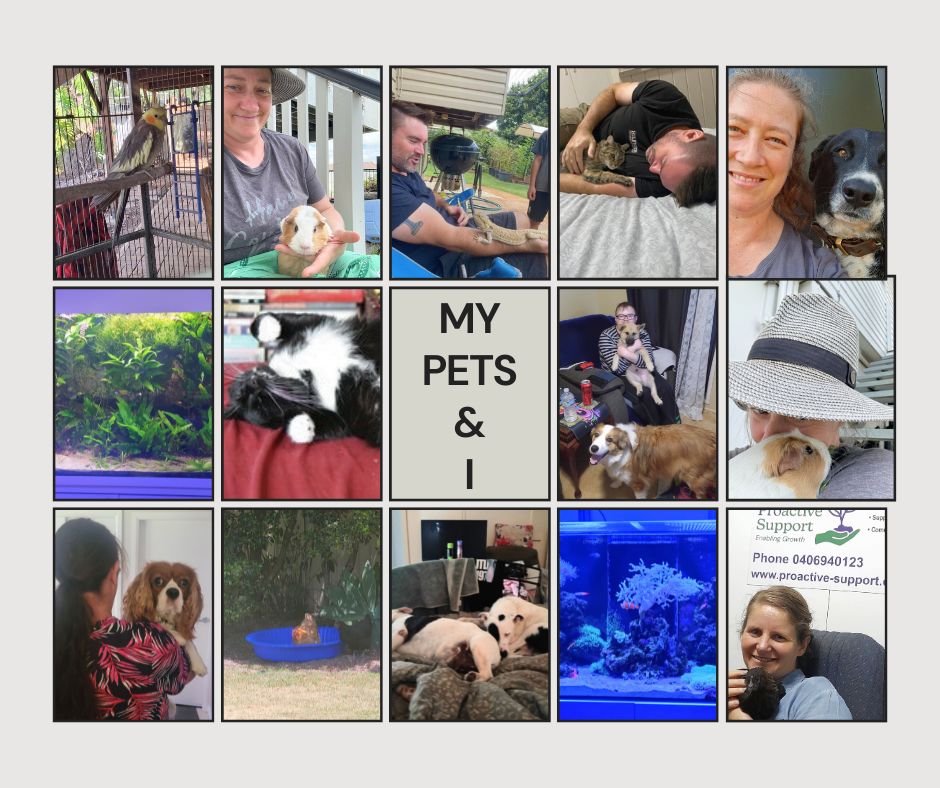November, 2025 No 12
From the Director’s Desk
Greetings folks!
Hail, wind, thunder, lightning, fires, heatwaves, electrical outages – it’s all been happening!
Where do you go in an Emergency? What do you do? Do you have an action plan?
NDIS expects providers to work with participants to create an Emergency Plan and this has been a great exercise to go through with people as it helps identify gaps and come up with solutions.
-Do you know your neighbours?
-Have you got enough water?
-If something happened to the carer, who else could help?
-What if the internet didn’t work for a couple of days?
Emergency Preparedness is thinking about what could happen in an emergency and planning for the possibility. We don’t realise how much we rely on ‘stuff’ until we don’t have it! So do the thinking work now, and reap the benefits later!
Stay Safe!
Beatrice, Director


NDIS Focus
NDIS Commission’s Disability Action Plan 2025–2030
The NDIS Commission has released its first Disability Action Plan to help create a more inclusive and accessible organisation for people with disability. The plan aims to make sure people with disability feel valued, respected, and empowered in
everything the Commission does.
The plan focuses on three main goals:
1. Making all environments and digital systems more accessible
2. Becoming an employer of choice for people with disability
3. Leading the way in disability inclusion
The plan was shaped by people with lived experience of disability — including NDIS Commission staff and community members from diverse backgrounds. The Commission will continue to listen, learn, and improve through regular updates and annual progress reports.
To learn more, visit the NDIS Commission’s website.
NDIS Commission Disability Action Plan 2025–2030 | NDIS Quality and Safeguards Commission
Prepare with Social Stories:
If you or someone you support is heading into a hospital appointment, check-up or procedure, the Perth Children’s Hospital website has “social stories” that can help make things a little less scary. These are simple step-by-step picture guides that explain exactly what to expect — things like having an X-ray, getting eye drops, or visiting the Emergency Department. Perth Children’s Hospital
You can download them in A4 format or as a flip-book you can flip through one page at a time. They were developed especially for kids with neuro-diversity, but they’re useful for anyone who wants to feel more prepared and calmer. For more information, Social stories: Step by step procedure guides.
Thank you Tabs for the tip!
.jpg)
WHS TIP
Everyone — staff and participants alike — should have an emergency plan in place. Here in Queensland, we all know how hot it can get, and with crunchy grass underfoot, we’ve been grateful for any bit of rain! But with fire warnings popping up across the state, it’s a good reminder to stay prepared.
Support workers can play a big part in this by helping participants create, understand, and practice their emergency plans so everyone knows what to do and where to go if something happens.
If you don’t have an emergency plan yet, let us know — we’re happy to help you get one started. A little planning now can make a big difference later, and knowing what to do in an emergency can help keep everyone safe.
Staff Focus
At Proactive Support, we believe that everyone has the right to make choices about their own lives. As support staff, our role is not to do everything for the people we support, but to work with them — guiding, encouraging, and empowering them to take steps toward independence.
Why independence matters
Independence is about more than just doing tasks on your own. It’s about building confidence, learning new skills, and having control over decisions that affect your life. When participants feel empowered, they can achieve goals that are meaningful to them, whether it’s managing daily routines, pursuing hobbies, or making choices about their health and wellbeing.
Supported decision-making in practice
Supported decision-making is a key principle in disability support. It means helping participants understand their options, weighing the pros and cons, and making informed choices — rather than making decisions on their behalf. For example:
- Daily tasks: Instead of preparing a participant’s meal for them, staff can guide them in planning and cooking, offering help only when needed.
- Community involvement: Encourage participants to decide which activities they want to join and support them in accessing those opportunities safely.
- Problem-solving: Help participants think through challenges, offering advice but letting them choose their solution.
Small steps count
Independence doesn’t happen overnight. Each small step matters — from learning to use a new tool, to making a choice about what to wear, to managing personal care. Celebrate successes, no matter how small, and provide encouragement when things don’t go as planned.
Our role as support workers
Our job is to create opportunities for growth, provide guidance when needed, and respect each participant’s choices. This approach helps build skills, confidence, and self-esteem, allowing participants to live life on their own terms. By focusing on participant independence and supported decision-making, we contribute to a culture where people feel valued, capable, and in control of their lives.
Tab’s Talking
I am sure Spring got skipped around my place. Feels like summer has arrived already. Stay sun safe and look for fun activities where we can have shade. One of my clients lives alone, and he needs help with community access. Today I reminded him to cut his fingernails (talk about a rather uncomfortable discussion), but I could see that he had torn one of his nails while we did gardenwork this morning. He looked for an excuse and told me that he struggles to cut his nails on his right hand. No worries, I am here to support and help. And sometimes it’s the nail clipper that isn’t suitable for a certain person. Trying to find a nail clipper that suits the need can be a huge blessing.
I attended an Occupational Therapy session this week, and our client was asked to do an online game. The title was “Think it or Say it”. There were more than 18 sayings to be sorted, either into the right side (say it out loud) or to the left-hand side (keep it in your brain). A very good training ground for a Highschooler with special needs, and what a great reminder for us to guard our mouth too. It really does matter if you think, “This Teenager next to me has a stupid hairstyle,” or if you say out loud, “Hey, mate, your hair looks so stupid today!
Give it a go: www.wordwall.net
As we head towards hotter days, please make sure you and your clients are aware of disasters. The emergency plan from
Proactive Support has been a great eye opener. Often things around your household - paperwork, medications, etc - get
forgotten to talk about. You might even find there are services or subscriptions you could cancel, like a magazine you don’t read anymore. At the end of the day, it’s your dollar, which can be used somewhere else more important, or invested instead.
Take care and check out the Brisbane planetarium - what a great space to educate children!
Take a walk through the amazing gardens, and don’t miss the Japanese Bonsai space and ohhh the Ferns!!
Talk soon
Tabs
.jpg)
Joke
Why did the scarecrow win an award? Because he was out-standing in his field!

Disability Services Inquiry
For more information, see Disability Support Services Sector Inquiry - Fair Work Ombudsman
Joke
Why did the tomato turn red? Because it saw the salad dressing!
What’s in the First Aid Kit:
Did you know that all Proactive Support staff carry a First Aid Kit in their car? It’s there just in case —whether it’s to help a participant, lend a hand to a stranger, or handle one of life’s unexpected little moments (because we all know they happen when we least expect them!).
Let’s take a peek inside and see what some of these items are for:
Emergency Blanket: Looks shiny and crinkly, but it’s actually amazing for keeping someone warm if they’re in shock or cold. It reflects body heat and helps maintain temperature until help arrives. Bonus tip — it’s also handy as a temporary rain cover in a pinch!
Gauze Swabs: These little squares are perfect for cleaning or covering small cuts and scrapes. They help stop bleeding and keep wounds clean.
Eye Wash: Got something in your eye? The sterile saline is designed to gently flush out dust, dirt, or chemicals.
Bandages and Dressing Strips: Whether it’s a twisted ankle or a small nick, there’s something in the kit to support it. Crepe bandages can hold ice packs or dressings in place, and dressing strips (yep, Band-Aids!) keep smaller wounds covered while they heal.
Gloves: These are a must-have. They keep both you and the person you’re helping safe from germs or infection. Always pop them on before you start any first aid.
Alcohol Wipes: Great for cleaning small cuts or your hands before and after treatment.
It’s amazing how a few simple items can make such a big difference in an emergency. So next time you see your First Aid Kit in the car, give it a quick check to make sure everything’s stocked and ready to go. You never know when you might need it — and you’ll be glad it’s there when you do!


